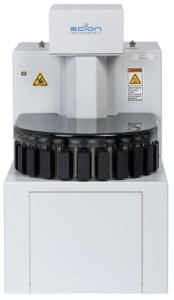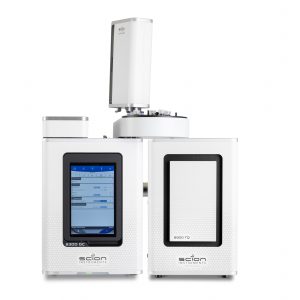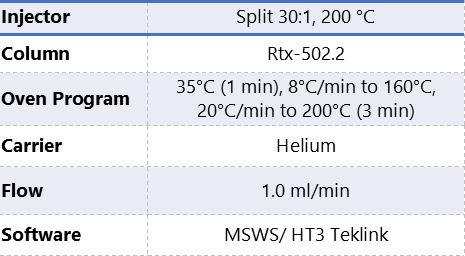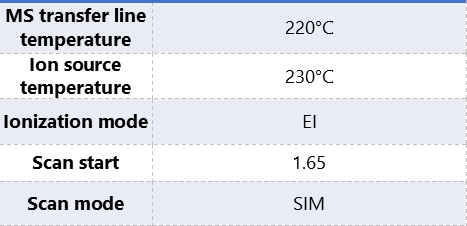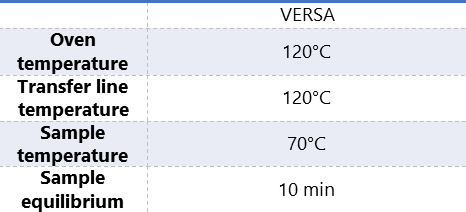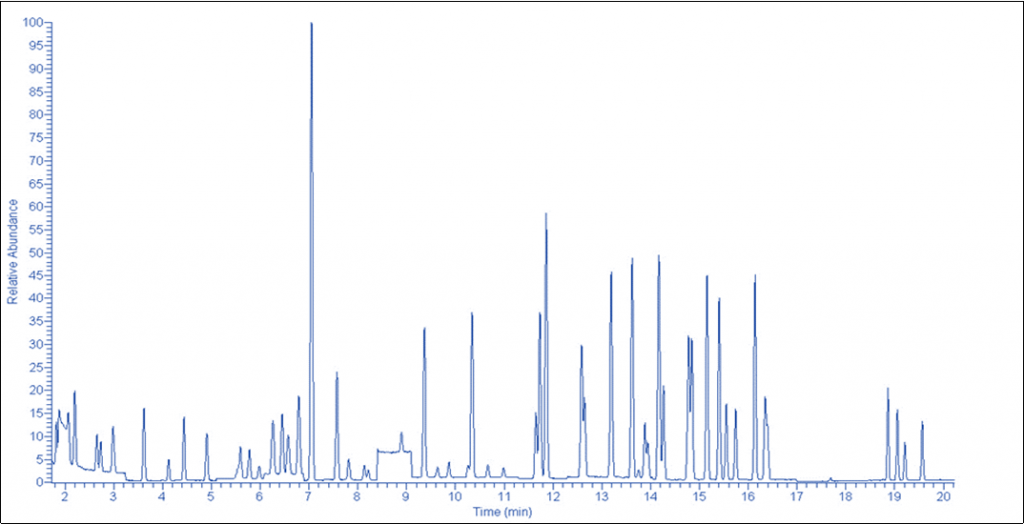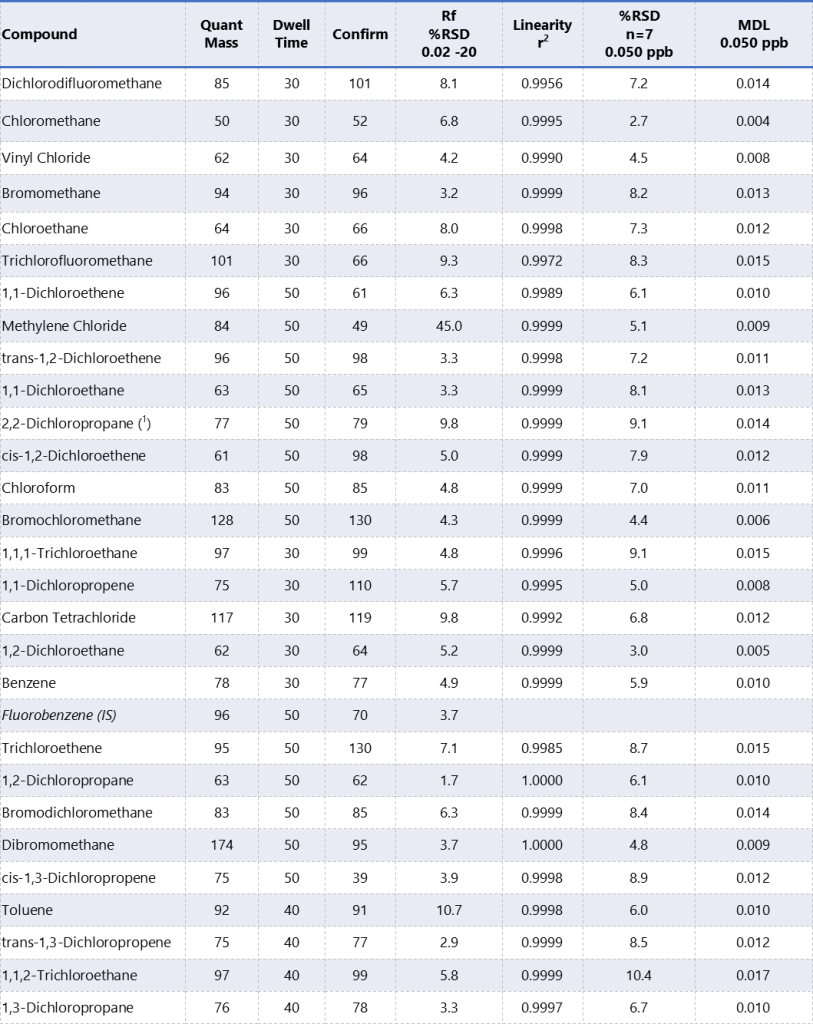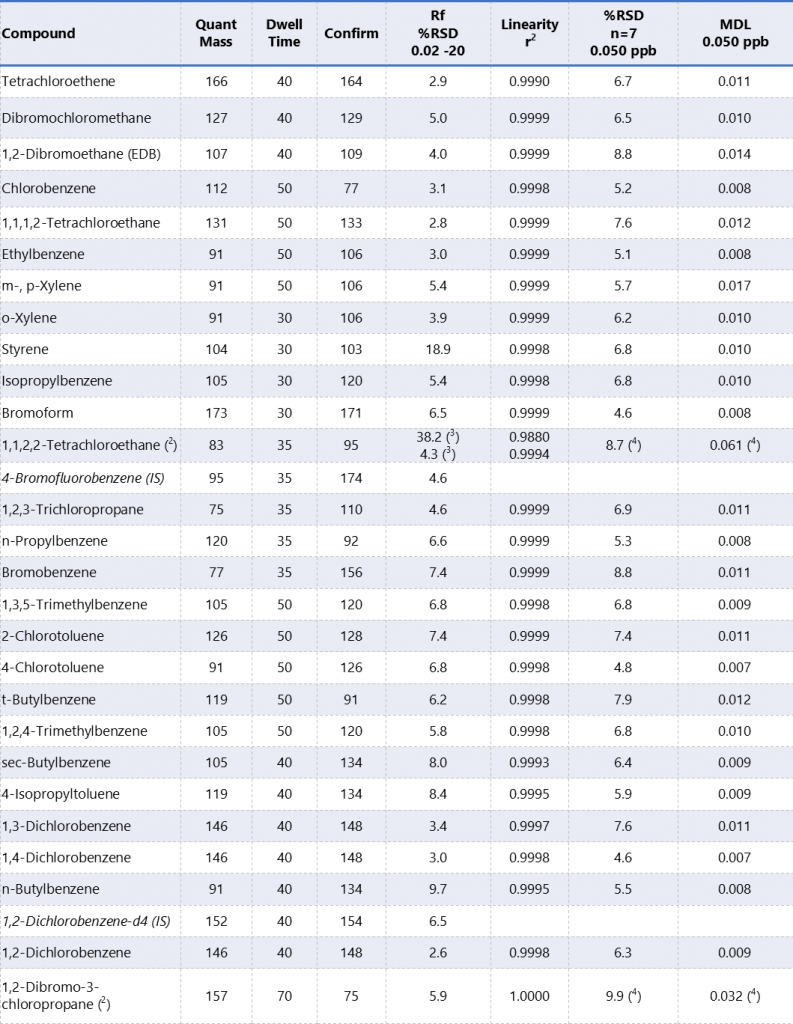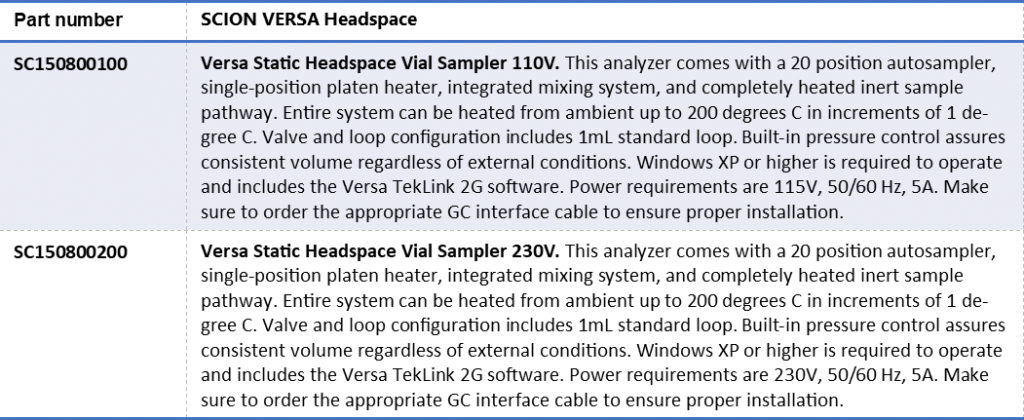Achieving ppt Levels of Environmental Volatiles with a New Headspace Sampler
Introduction
This study focuses on the SCION Instruments Versa Automated Headspace Analyzer and its ability to analyze Volatile Organic Compounds (VOCs) in water at the part per trillion (ppt) level.
The European Union defines a VOC component as “any organic compound having an initial boiling point less than or equal to 250°C, measured at a standard atmospheric pressure of 101.3 kPa”. Many VOCs are man-made chemicals that are used and produced in different industries.
VOCs can be harmful to the human health, the effects can be direct or can be build up in the body to cause long-term health problems. Because of these health effects it is important to monitor the VOCs. SCION Instruments offers a perfect solution to measure these components even on ppt levels.
Figure 1. SCION VERSA Headspace Sampler together with the SCION Instruments 8300 GC platform in combination with to 8700 SQ-MS.
Experimental conditions
The Versa Automated Headspace Analyzer in conjunction with a GC/MS system was used for this analysis. The parameters for these systems are displayed in table 1.
Table 1. Instrumentation operating conditions.
Standard and sample preparations
Stock standards from a 524.3 and a 502.2 commercially available mix were prepared in methanol at 5 and 50 parts per million (ppm). These stock standards were used to prepare working standards in distilled water for the calibration curve and MDL study. The compound list is presented in Table 3.
An internal standard solution containing 4 ppm of fluorobenzene, 4-bromofluorobenzene and 1,2-dichlorobenzene-d4 were prepared in methanol. 5 µL of this standard was added to all samples and blanks for a final concentration of 2.0 ppb.
The headspace samples consisted of 10 mL of distilled water or the appropriate working standard.
Calibration curves and MDL
The stock standard above was used to make a calibration curve from 0.020 to 20 ppb. MDL samples were prepared at .050 and 0.100 ppb. Figure 2 is the total SIM chromatogram of a 0.05 ppb standard which is typically the lower detection limit standard used in scanning GC/MS. Figure 3 is a SIM chromatogram of the 0.020 ppb standard.
Figure 2: Chromatogram of the Summed Specific Ions of the 0.5 ppb Standard
Figure 3: Chromatogram of the Summed Specific Ions of the 0.020 ppb Standard. The specific ion mass 75 m/z of cis-1,3-dichloropropene is inserted to display its peak area.
The data passed the current requirements of both methods with the majority detectable below the 0.020 ppb standard. The calibration curve from 0.020 ppb to 20 ppb for most of the compounds was <10% RSD, and the correlation coefficient was >0.995 for all compounds except 1,1,2,2-tetrachloroethane. 1,2-Dibromo-3-chloropropane and 1,1,2,2-tetrachloroethane were not detectable below 0.100 ppb with this method making their calibration range from 0.100 ppb to 20 ppb.
Table 2 presents the calibration data including %RSD for both the response factors Rf and using n=7 replicate samples for MDLs, correlation coefficients, and calculated MDLs. Styrene, toluene and methylene chloride are laboratory background contaminants.
1,1,2,2-tetrachloroethane did not pass the %RSD or correlation coefficient requirements when tested as an unmodified water sample. The newly released EPA Method 524.3 uses maleic acid as a dechlorinating agent and ascorbic acid as a preservative. 1,1,2,2-tetrachloroethane did pass these requirements when tested with the addition of these acids as a matrix modifying solution.
Minimum detection limits calculated from 0.050 ppb standards were below 0.020 ppb for all of the compounds except 1,2-dibromo-3-chloropropane and 1,1,2,2-tetrachloroethane. The MDL values for these two compounds were calculated from the 0.100 ppb level standards.
1 – No peak detected at the 0.020 ppb levels.
2 – No peak detected at the 0.020 ppb or the 0.050 ppb levels.
3 – Upper data from the unmodified water standards. Bottom data from the ascorbic and maleic acid modified solution.
4 – MDL data calculated from the 0.100 ppb standards.
Table 2. Mass Ion, Scan Rate, and Calculated Data for the VOCs Evaluated
Conclusion
Versa, a static only headspace instrument, was evaluated to determine its capability of producing quantitative data for VOCs using SIM GC/MS at or below current water methods. These water methods include US EPA Method 524 and the 98/83/EC Directive. The data passed the current requirements for both methods with most of the compounds detectable below the 0.020 ppb standard. These detection limits are well below the current levels required by these methods.
Order information
Download Application Note
Download complete Application Note here: Achieving ppt Levels of Environmental Volatiles with a New Headspace Sampler
Keep in Touch
If you wish to keep up to date with SCION Instruments latest research and articles, why not join us on social media and sign up to our Linkedin newsletters today?

